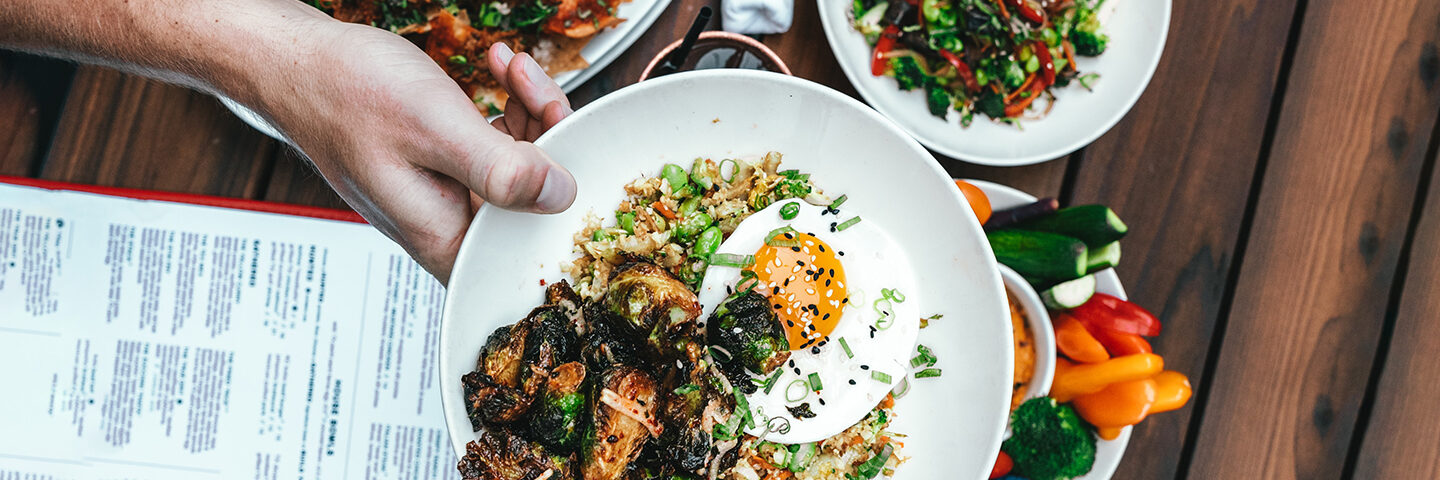
The Hottest New Food Trend: Mental Wellness
Along with plant-based foods, Nashville Hot and oat milk, topping the ‘on trend’ lists in 2022 is something that may seem surprising: self-care and mental wellness. The journey through the and past the pandemic has prompted mind health to be considered and prioritized perhaps more than ever before. Today an equal number of consumers – 92% – consider both mental and physical health to be important in creating an overall sense of well-being, recognizing the importance of not only a healthy body but also a healthy mind.1 Consumers agree that eating right is a key component of self-care and food has an important role to play in our mental wellness.
Most people believe food can be medicine, and over half are extremely or very likely to purchase foods that support mental well-being with Millennials especially enthusiastic about purchasing foods for mental health.2 This motivation has given rise to a huge variety of new product launches, things like “mood-boosting” beverages and supplements that help us “chill.” Products like this can be fun to try, but there’s an even tastier, more accessible, and scientifically backed option available to support mental wellness: produce. Fruits and vegetables contain a wide variety of brain-healthy and mood-enhancing vitamins, minerals, antioxidants, healthy fats, and more that have beneficial impacts on our minds and moods.
Following the pandemic, consumers are also eager and ready to be wowed by restaurants again – 75% of consumers are looking forward to new food and beverage trends in the year ahead, and fruits and vegetables are the food categories that consumers are most interested in increasing in their diets this year.2 Foodservice is responding accordingly, and produce is popping up across all segments in innovative and delicious ways. The fastest-growing fruits on menus take a tropical lean, dragonfruit is the top-trending variety this year offering both bold, bright-pink color and a punch of magnesium, a mineral that is important for proper brain function. Studies also suggest magnesium may also play a role in the prevention or treatment of anxiety and depression.3 Foodservice operators are experimenting with dragonfruit in beverages, smoothie bowls, and desserts; with options like Starbucks Mango Dragonfruit Refresher and the Dragon Dream Bowl at Green & Tonic, made with dragonfruit, mango, banana, strawberries, kiwi, and coconut. Avocado is another magnesium-rich fruit that continues to soar on menus, growing 4.5% over the past four years and projected to be found on over half of all restaurant menus in the US – 53.6% – by 2025.4 Avocados also contain vitamins D, E, A, and K, and the good fat helps to absorb key antioxidants and fat-soluble vitamins that keep the brain healthy.
The top-trending vegetables on menus include a variety of green vegetables, from Brussels sprouts to broccolini and microgreens. Green vegetables are great for mental wellness, leafy greens, in particular, contain important nutrients that protect against cognitive decline including vitamin E, folate, carotenoids, and flavonoids.5 Consumers are taking note, 62% of the population is extremely or very interested in foods that prevent mental deterioration and neurological illnesses like Alzheimer’s and dementia. Foodservice operators are creating dishes that highlight a variety of green vegetables, from MOD Pizza’s Cauliflower Power salad made with spinach, kale, and broccoli, to Chipotle’s fresh super greens lettuce blend made with romaine, baby kale, and baby spinach. Kale, specifically, has trickled from an initial start in fine dining restaurants to become a common staple at fast-casual and progressive QSR chains, serving as both comfort food and LSR chains’ proof of healthy menu options, bringing mind-healthy nutrients wherever it’s used. Another green veggie, sea greens, can be overlooked but are rich sources of brain-boosting minerals and vegetarian sources of anti-inflammatory DHA. Spirulina and kelp are two of the most common sea greens used in restaurants today, found in smoothies, soups, salads, and noodle dishes.
In honor of Food Rooted in a Better Mood®, it’s easy to prioritize self-care and mental well-being by getting to the root of things with fruits and vegetables. If you’re looking for a mood boost, give fruit and vegetables a try.
References:
-
Datassential New Foundations in Health Keynote, April 2021
-
Datassential custom research, January 2022
-
https://pubmed.ncbi.nlm.nih.gov/28445426/
-
Datassential MenuTrends
-
https://academic.oup.com/aje/article/165/12/1364/125579?login=false


